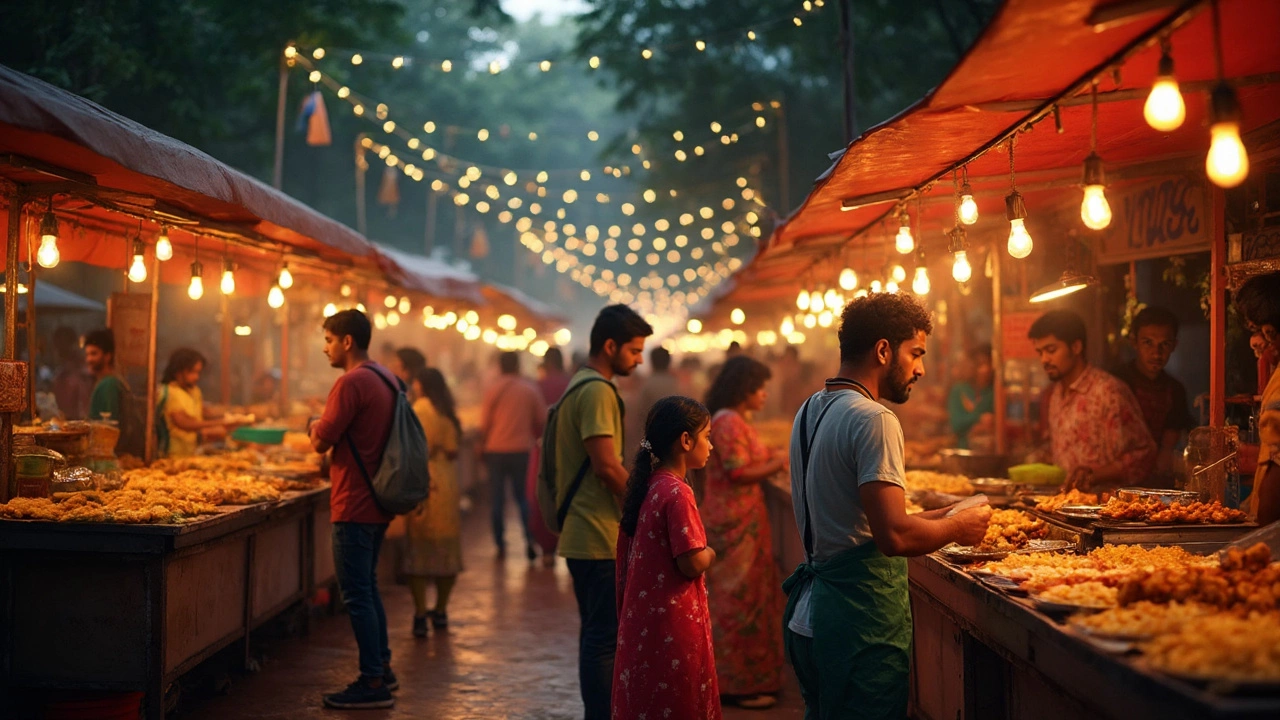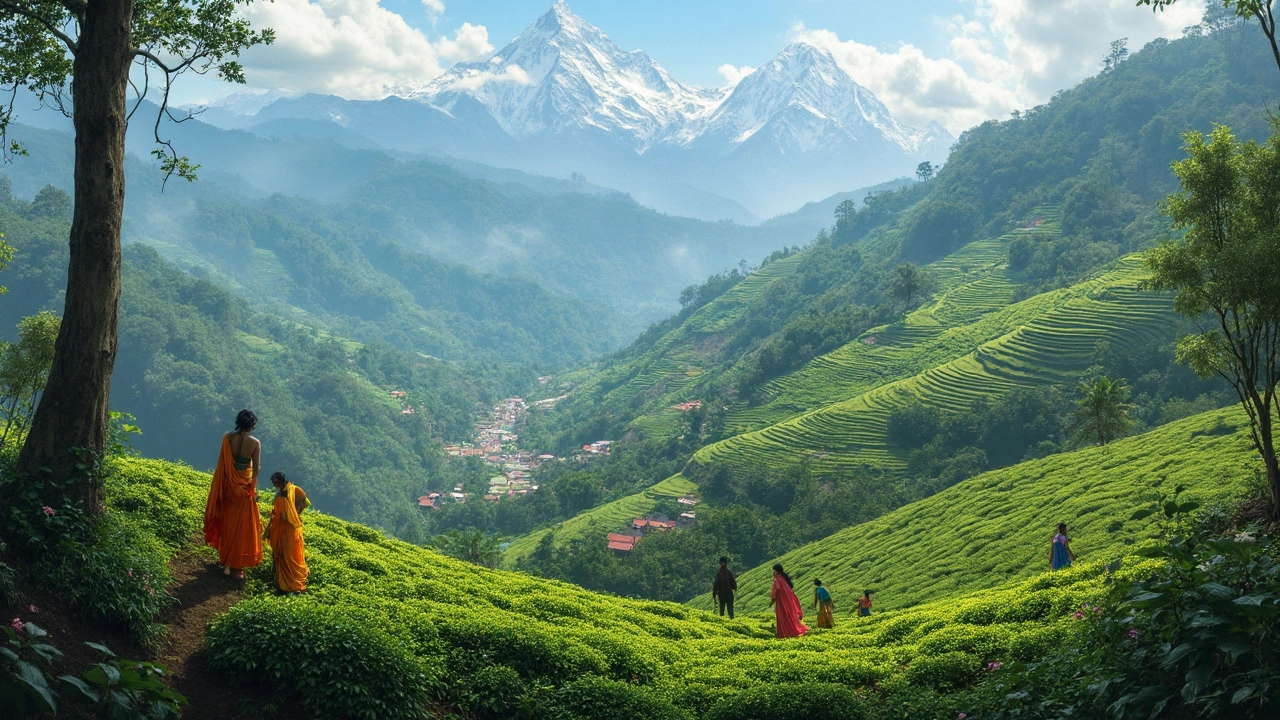Ever scrolled through an endless feed of India travel photos and caught yourself gawking at misty hill stations in Kerala one minute and snow-dusted peaks in Himachal the next? It’s an honest struggle—South India and North India both go all-in on natural drama, cultural depth, and food dreams. People argue over which region is more beautiful, but asking that is like comparing mangoes and apples—each brings its own flavor, energy, and wow factor. And honestly, nobody really wants to pick a side, but if you’re planning to travel, you need real answers. So, here’s the raw, unfiltered scoop—based on scenes, stats, debates, and my own wallet-emptying adventures across them both.
Nature’s Show: From Cardamom Hills to Himalayan Thrills
Start with the land itself; it’s where the debate usually heats up. South India is the poster child for lush—think rolling, mist-covered hills in Munnar, Kerala, the monsoon-green Western Ghats, and the glowing blue oceans nestled between palm-lined beaches. The region’s climate is predictably warm and humid, growing everything from spices to coffee. Walk through Coorg’s coffee estates or the Nilgiris’ tea gardens, and the air smells sweeter somehow. Some waterfalls empty into jungle chasms. Others—like Hogenakkal—bubble hard over ancient granite. Wildlife? There are entire forests humming with elephants, gaurs, peacocks, and secretive tigers. Ask a local in Wayanad about tiger sightings, and chances are, you’ll hear a story from the week before.
Now, North India pulls no punches in the beauty department either. The Himalayas occupy center stage, obviously. You stand in Ladakh, Spiti, or Uttarakhand, and it’s hard to decide if you’re more excited or just breathless from the altitude. The snow, the pine forests, the rivers that cut through stone—they aren’t just settings for Bollywood songs; they’re the real-life movie set. Head further south, and the clusters of sand dunes in Rajasthan catch fire at sunset. There’s a reason photographers chase that golden hour light in Jaisalmer. Not to mention, North India is home to the Ganges and Yamuna—rivers that thousands visit for a spiritual dip or to photograph the spectacular ghats of Varanasi.
Let’s get even more specific with the facts. According to the India Tourism Statistics 2024, Kerala is consistently rated the nation’s No. 1 state for health and eco-tourism. On the other side, Himachal Pradesh and Uttarakhand pull huge adventure tourism crowds, offering paragliding, white water rafting, and some of the world’s top trekking routes. South India’s Western Ghats are a UNESCO World Heritage Site, boasting more than 5,000 flowering plant species, while the Himalayas cradle unique wildlife, like the elusive snow leopard.
Bottom line: one is green, undulating, tropical, and laid-back; the other is dramatic, vertical, and untamed. Both are jaw-dropping, but the vibes are wildly different. If you’re chasing cool weather and sharp landscapes, the North wins. Want soft sunlight, dense green, and cozy homestays? Go South. Can’t decide? Check this out:
| Region | Top Scenic Spot | UNESCO Sites | Popular Season |
|---|---|---|---|
| South India | Western Ghats, Kerala Backwaters | Western Ghats, Nilgiri Biosphere | October–March |
| North India | Himalayas, Rishikesh | Great Himalayan National Park, Manas Wildlife Sanctuary | March–June, September–November |
Culture Clash: Temples, Forts, and Festivals on Parade
You can’t talk about beauty in India without digging into its living, breathing culture. South India rolls out an architectural feast—giant Dravidian-style temple gopurams, covered with technicolor carvings of gods and goddesses, often stretching as high as a ten-story building. The Meenakshi Temple in Madurai almost looks like a psychedelic LEGO palace, and the stone rathas at Mahabalipuram are so old even archaeologists shrug at their mysteries. The music here runs deep: Carnatic classical concerts fill old halls, and Bharatanatyam dancers spin myth into movement, wearing jewel-toned costumes and quicksilver footwork.
North India serves up a completely different vibe. Mughal grandeur, Rajput forts, and age-old spiritual sites blanket the landscape. No trip is complete without gawking at the Taj Mahal in Agra—a marble poem, basically—while Jaipur’s Amber Fort and Delhi’s Red Fort let you wander inside stories from centuries ago. Festivals get rowdy: Holi in Vrindavan is a riot of colored powder and laughter, and the Ganga Aarti at Varanasi is a hypnotic fire-lit prayer, drawing thousands every day. If history’s your thing, North India feels like walking through live chapters of a fantasy novel.
Both regions love a good celebration, but their styles are night and day. South India’s temple festivals can last for days, with chariot parades, glowing oil lamps, and elephants all decked out in gold. One tip: if you find yourself in Thrissur during Pooram, do not miss the fireworks—locals say you can feel the explosions in your bones.
Languages shift as you travel too. The South favors languages like Tamil, Telugu, Kannada, and Malayalam, each with its own script and literature stretching back over two millennia. Classical music and Ayurveda are still part of daily life. In the North, Hindi dominates, with heavy influences from Urdu, Punjabi, and even Persian in the old cities. North Indian folk dances like Bhangra (from Punjab) or Kathak performances set a beat you can’t ignore.
Local tip: If you want more than just a selfie, join a food tour or music performance in either region. You’ll meet people, hear stories, and learn more in a few hours than any dusty guidebook will ever tell you.

Food Adventures: From Spicy Curries to Royal Feasts
Alright, let’s have a real talk about food. Ask anyone who’s spent a week traveling through the South—eating on a banana leaf in Tamil Nadu or devouring crispy masala dosas in Karnataka—and they’ll tell you South Indian food is something else. Rice is king: you’ll find it in everything from soft idlis to lemony tamarind rice. Coconut sneaks into nearly every dish. Sambar and rasam are more comforting than a hug from your grandma. The region is big on vegetarian fare, but seafood shines along the coasts—goa’s prawn curry, Kerala’s fish molee, or Mangalore’s seer fish curry (it’ll ruin you for life if you love fish). Even filter coffee is an experience: sweet, strong, and somehow breakfast-worthy and dessert-worthy at the same time.
North Indian cuisine, on the other hand, is all about bold spices and slow cooking. Picture big platters of butter chicken, dal makhani, and naan pulled hot from a clay tandoor. Street food is an adventure: chaats in Delhi, steaming momos in the hills, spicy samosas in Lucknow, and Rajasthani thali so huge you’ll probably slip into a food coma. For the sweet-toothed, North India is paradise—think jalebi, gulab jamun, or layers of flaky sohan halwa from Old Delhi’s legendary shops. And when you need to cool down from all the masala heat, there’s lassi, the original smoothie—creamy, cold, and topped with a froth of malai (cream).
One very real difference: the South may feel more plant-based, lighter, and suited to hot weather, while the North revels in creamy gravies, grilled meats, and food built for cold, foggy nights. According to a 2024 survey by the National Restaurant Association of India, dosa is still India’s most popular breakfast order for online deliveries, while butter chicken rules dinner carts (and hearts) up North. Whether you’re vegetarian, carnivore, or snack addict, both zones will push your jeans to their limit.
Pro tip: Never pass up roadside chai. In the South, you’ll get a tiny glass of golden-brown, impossibly fragrant ‘filter kaapi’ (coffee). The North offers sweet, spiced chai that warms you to your core. Both regions have street food scenes bursting at the seams, so try everything and forget about calories for a while—trust me, it’s worth it.
Insider Tips: Travel, People, and What Photos Miss
Here’s something you don’t always hear: travel isn’t just sights, food, or big-name places. The people make the place as much as the waterfalls, palaces, or festivals do. South India’s pace is famously laid-back, like everyone’s in on some big, happy secret. Strangers will ask if you’ve eaten—“Sapadacha?” in Tamil—before directions. Tamil Nadu, Kerala, and Karnataka are statistically among the safest and cleanest states in India, according to the 2024 NITI Aayog State Index. The literacy rates down South are highest in the country, and it shows: almost everyone you meet is eager to chat, help, or share a tip about where to find the best biryani or secret yoga retreat.
Meanwhile, North India brings a different kind of energy—louder, more crowded, more unpredictable, in the most fun way. You’ll haggle with rickshaw drivers in Delhi’s Chandni Chowk, watch impromptu wedding processions take over sleepy streets in Jaipur, or be pulled into festival dancing in a blink. North Indians can be direct and hilariously witty. They’ll tease you for your accent, invite you home for chai, and argue about cricket—sometimes all at the same time. Rajasthan, despite its arid landscape, has some of the warmest hospitality; ‘Atithi Devo Bhava’ (guest is god) is a way of life in both North and South.
What do most travel Instagram feeds miss? The magic of regular days—schoolkids cycling through Tamil Nadu’s rice fields, grandmothers feeding holy cows at dawn in Vrindavan, fishermen bringing in catch at dawn in Pondicherry, or Ladakhi grannies knitting under prayer flags. There’s beauty in everyday chaos—a beauty that doesn’t answer to hashtags, postcards, or even words, really. If you slow down, hang around, and let yourself get a little lost, that’s when you find it. Also, plan for surprises: Yes, trains do run late, WiFi is spotty in the Ghats and the Himalayas, monsoons will soak you when you least expect it, but you’ll laugh about it later.
To help you decide, ask yourself: do I want misty tea gardens, backwaters, and spice-scented air? Book that South India ticket. Need snow, ancient forts, and rivers for days? Head North. Or, and this is my advice as someone hopelessly biased by both: do both. Start on one coast and train or bus your way to the other. Compare vada with samosa, coast with mountain, temple with fort, all in one wild trip. You’ll thank yourself—and probably still won’t be able to pick a winner. Isn’t that the best kind of problem anyway?
